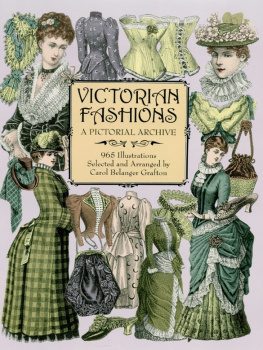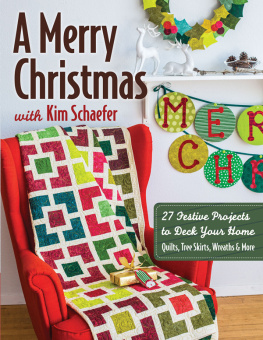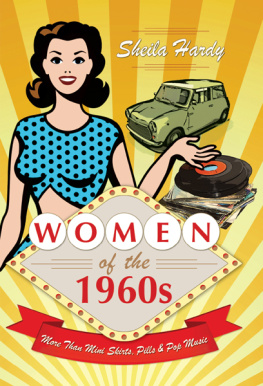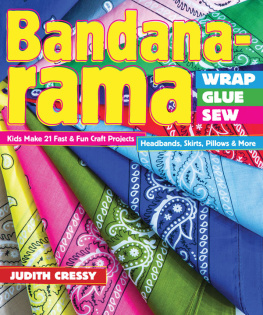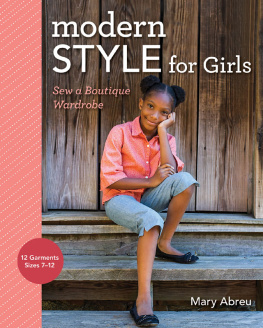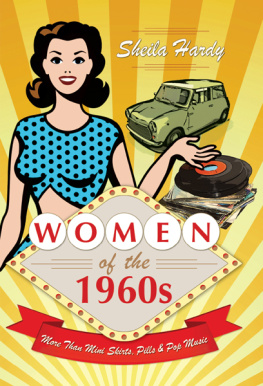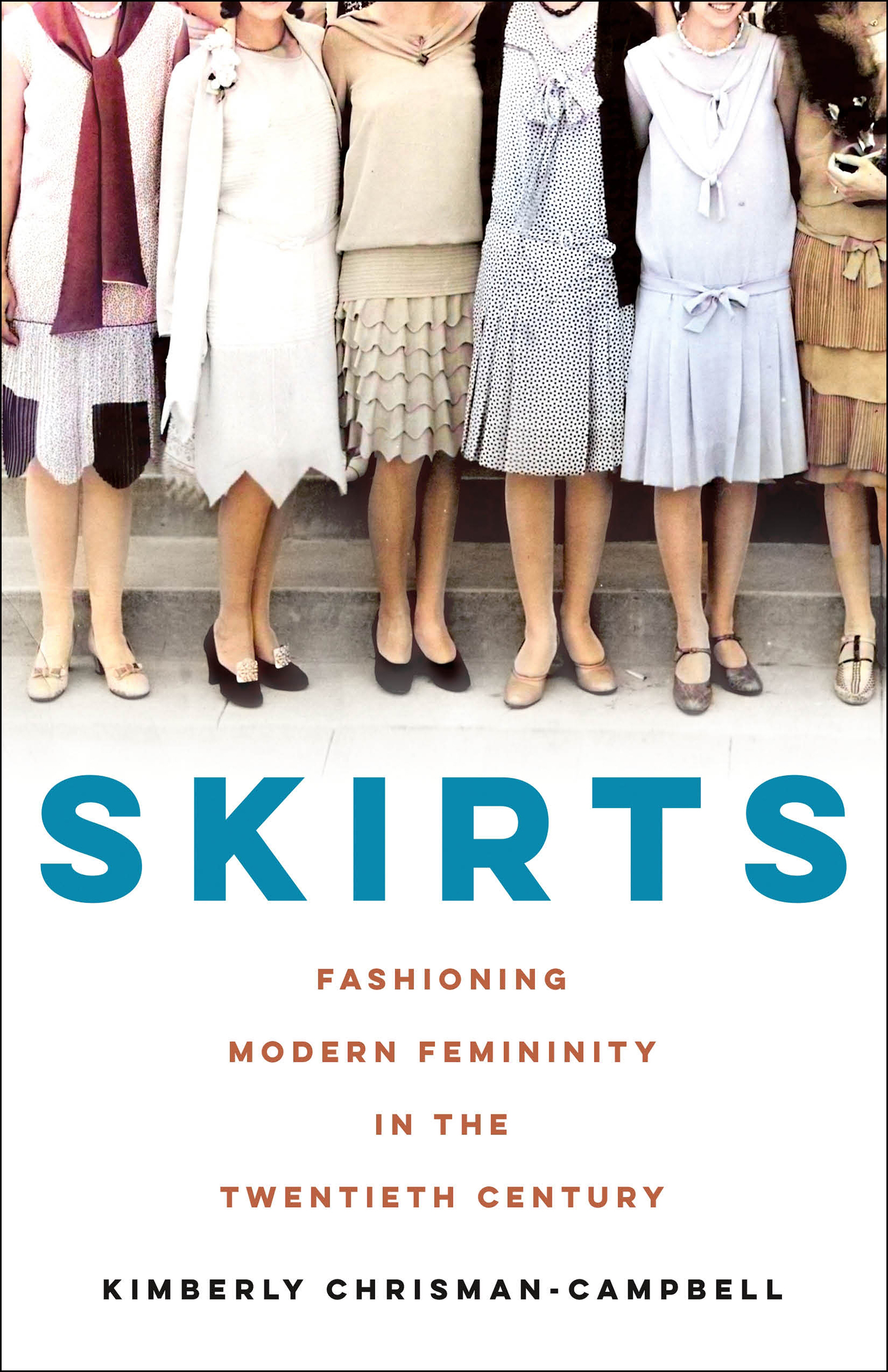Contents
List of Figures
Guide
Pagebreaks of the print version

The author and publisher have provided this e-book to you for your personal use only. You may not make this e-book publicly available in any way. Copyright infringement is against the law. If you believe the copy of this e-book you are reading infringes on the authors copyright, please notify the publisher at: us.macmillanusa.com/piracy.
If I were allowed to choose from the pile of books which will be published one hundred years after my death, do you know which one I would take? No, by no means would I select a novel from that future libraryI would simply take a fashion magazine so that I could see how women dress one century after my departure. And these rags would tell me more about the humanity of the future than all the philosophers, novelists, prophets and scholars.
Anatole France (18441924)
Why are you all dressed up? Its a question Ive been hearing my whole life, and the key word is dress. No one asks a woman why shes all dressed up when shes wearing jeans, or even a sleek, sharp pantsuit. But put on a skirtany skirtand suddenly youre being fancy.
Skirts have long been an obsession of mine, both personally and professionally. My first published article was about the mother of all skirts, the eighteenth-century hoop petticoat. In it, I discussed the primal appeal of enormous skirts, which emphasized (or at least gave the illusion of) a narrow waist and wide hips, telegraphing both virginity and fertility, two qualities that have historically been universally valued in women. That psychosexual subtext is likely lost on the millions of little girls who dream of dressing like Disney princesses, or the jaded fashion editors who stayed behind after Christian Diors debut fashion show to twirl around in his decadently long New Look skirts. But its there nonetheless. When you study historic fashion for a living, wearing long, full, multilayered skirts seems not just normal but sensible, and I increasingly practiced what I preached. Longtime friends who have never, ever seen me in pants laughed when I told them I was writing a book about skirts, dubbing it my anti-pants manifesto.
I was born in 1973, the same year as Diane von Furstenbergs wrap dress. Pants were finally becoming part of mainstream womens fashion in a serious way, but designers like von Furstenberg were pushing back, arguing (very successfully) that skirts still had their place. My relationship with pants might be different today had I been born a decade or two earlieror laterand its unlikely that I would associate wearing a skirt with dressing up rather than getting dressed. My first fashion role model was Audrey Hepburn as Holly Golightly in Breakfast at Tiffanys, who seemed to wear chic black evening gowns 24/7. Whatever her job was, I wanted it. I was too young to understand the circa-1960 call-girl lifestyle; to me, it was a fashion choice.
But it never occurred to me to stop wearing pants altogether; indeed, as a child of the 1970s, I remember too well wearing dresses over pants. Growing up, I was suspicious of my female classmates who only wore skirtsgenerally frilly floral frocks and ruffled skirts by Laura Ashley or Gunne Sax. They were the same girls who took ballet lessons and collected ringleted dolls and threw princess-themed birthday parties and cosplayed Little House on the Prairie, and I wanted nothing to do with their performative femininity. Instead, I practiced what then passed for performative feminism: I may have idolized Audrey Hepburn, but I also loved sporty Esprit separates, Barbies, Charlies Angels, Lynda Carters Wonder Woman, and skirted sleuth Nancy Drew. When I moved from sunny California to drizzly England for graduate school, I was as likely to wear pants as long, wooly skirtsanything to keep from freezing to death. (I also learned to call them trousers; in British English, pants denotes underpants.)
It wasnt until I finished grad school and got a job in the museum field that I virtually banished pants from my wardrobe. Working in a Gilded Age historic house encouraged a certain degree of formality, and you never knew when you were going to run into an elderly donor or trustee with conservative ideas about appropriate office attire. My female bosses wore not just skirts but pantyhose and heels every single day; some looked like chic corporate lawyers, others perpetually dressed like the mother of the bride in floaty pastels and pearls. I was not entirely surprised to learn in the course of researching this book that another historic house museum, The Frick Collection, required some of its female visitors to wear skirts well into the 1980s.
As a textile lover, Ive always been happiest wearing as much fabric as physically possible, and, as a historian, I appreciated the rich heritage of skirts and their role in female self-fashioning. As an impecunious newbie curator, throwing on a dress was the easiest and most economical way to look both professional and pulled together; all I had to do was add shoes and maybe a piece of vintage-store statement jewelry. Over time, my starving-student figure settled into a curvier silhouette, and skirts were undeniably more flattering than the low-rise and skinny trouser styles then in fashion. At some point, I realized that I need never again worry about how my butt looked in pants, or whether a waistband would dig in or stretch out over the course of the day, or how to keep my trouser socks from slouching down. My sex had gone hundreds of years without wearing pants. I could, too.
I wasnt alone. The early twenty-first century saw a dress renaissance led by a new generation of women in power, with an assist from Mad Men, the midcentury-set television drama that premiered in 2007, inspiring a trend for vintage and vintage-inspired fashion. Suddenly, even mall stores were full of dresses with swishy skirts, generous hemlines, and capacious pocketssomething jeggings just couldnt offer. A woman didnt have to wear a suit to be taken seriously in the workplace, or on the world stage. Thanks to the revival of the midi length, there was no danger of bending over or getting caught in a breeze and exposing an eyeful of thigh. Around the same time, many straight-size brands began offering tall and petite sizes, meaning hemlines were never too high or too low. I dont love pants, actress Reese Witherspoon confessed to the Los Angeles Times when she launched her Southern-accented fashion label Draper James in October 2015. To be totally honest theyre not my thing, probably because Im five-two and they make me look really short. I like wearing dresses because theyre easy, and I like skirts. The one and done aspect of the dress is central to its appeal to modern women: while the dress may seem fussy or formal to those who associate it with the nostalgic femininity of weddings, proms, and quinceaeras, it can also be functional and efficientthe essence of modernity.
Today, I have one pair of emergency jeans that I keep for those rare occasions when I feel like hiking or gardening, and some yoga pants that I never, ever wear outside of the gym. (As the late Karl Lagerfeld said, sweatpants are a sign of defeat.) But the rest of my wardrobe consists of skirts and dresses, most of them knee-length or longer. And the truth is, theres not much I want to do that I cant do in a skirt. I even have a modern version of Claire McCardells Pop-Over, a sturdy denim wrap dress thats ideal for doing housework. I wrote this entire book while wearing dresses around the house



